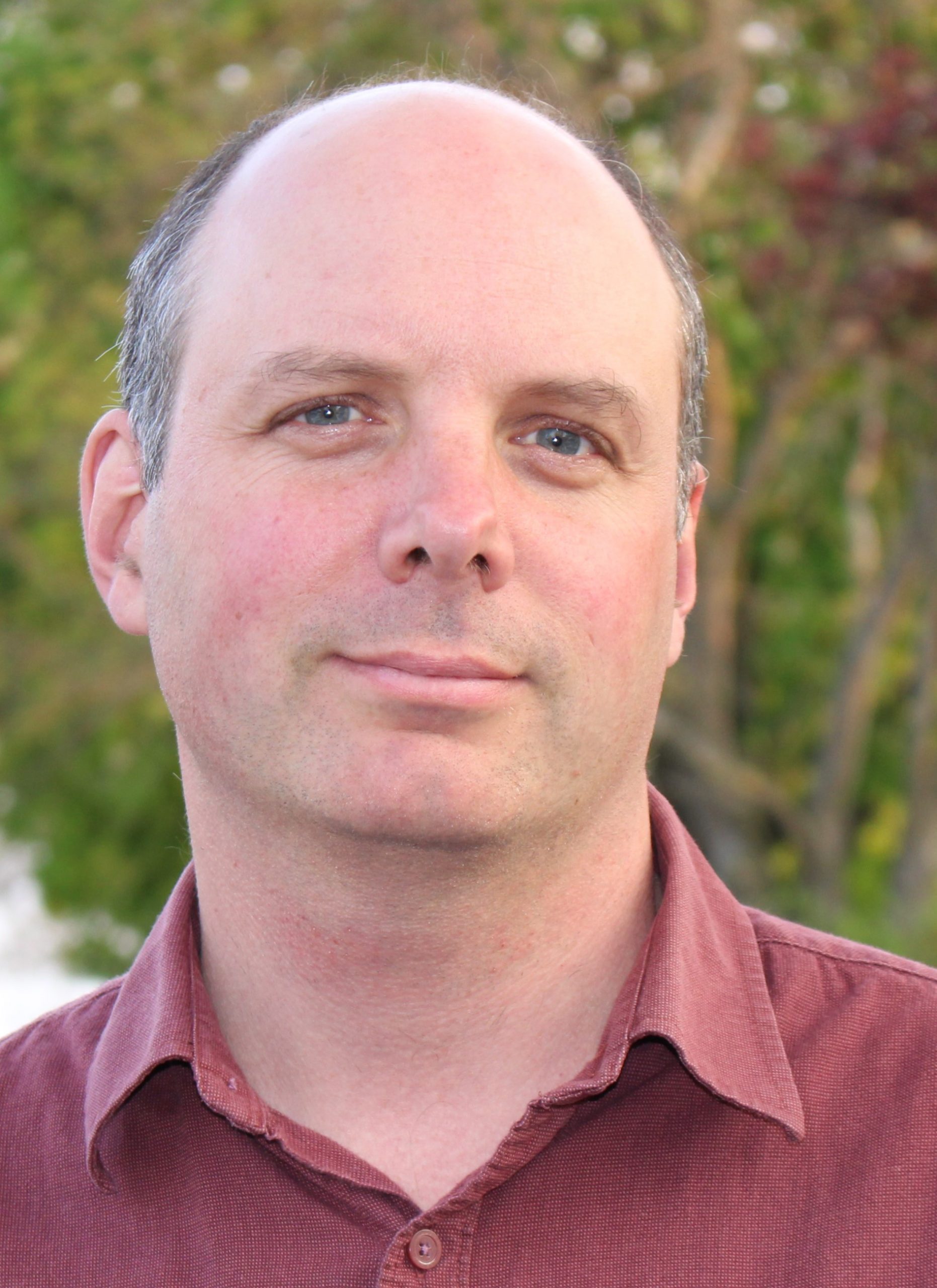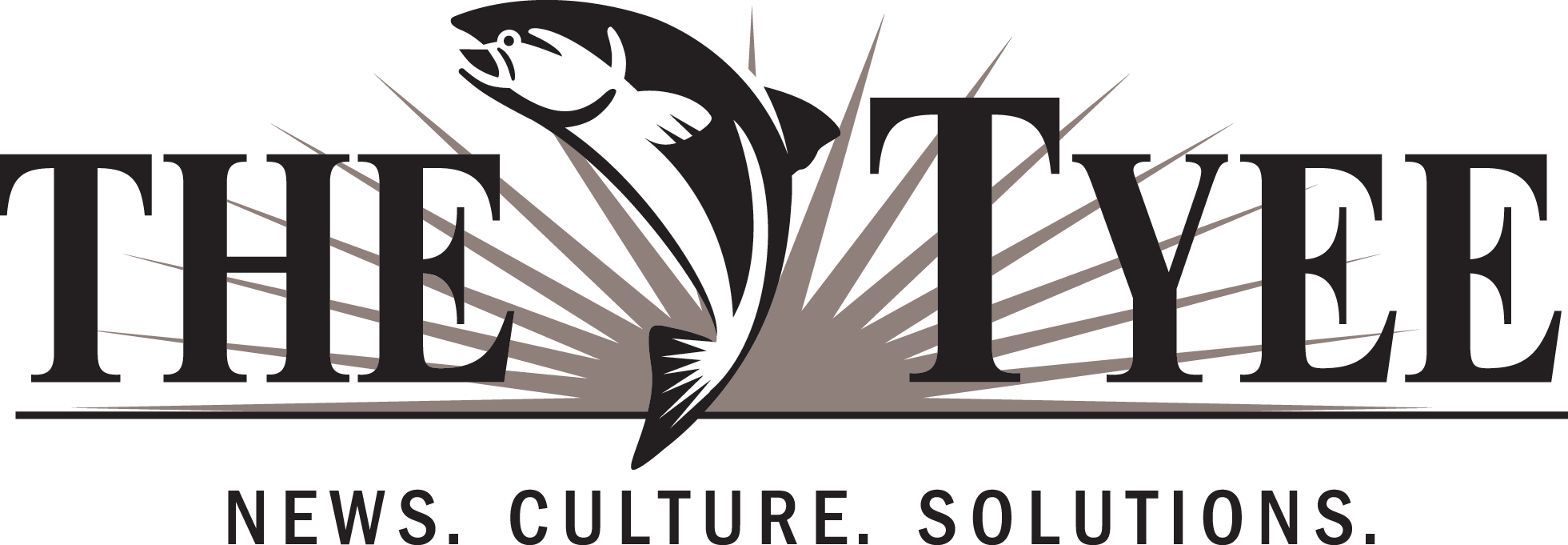
This story was originally published on The Tyee, a We Are Not Divided collaborator
Linda Coady was front and center as long time antagonists tried to reach a deal to preserve a stunning swath of nature called the Great Bear Rainforest. Asked whether it ever felt like the whole effort would collapse, Coady laughs, then says that in the early negotiations between logging companies and environmentalists, “There was never any shortage of drama.”
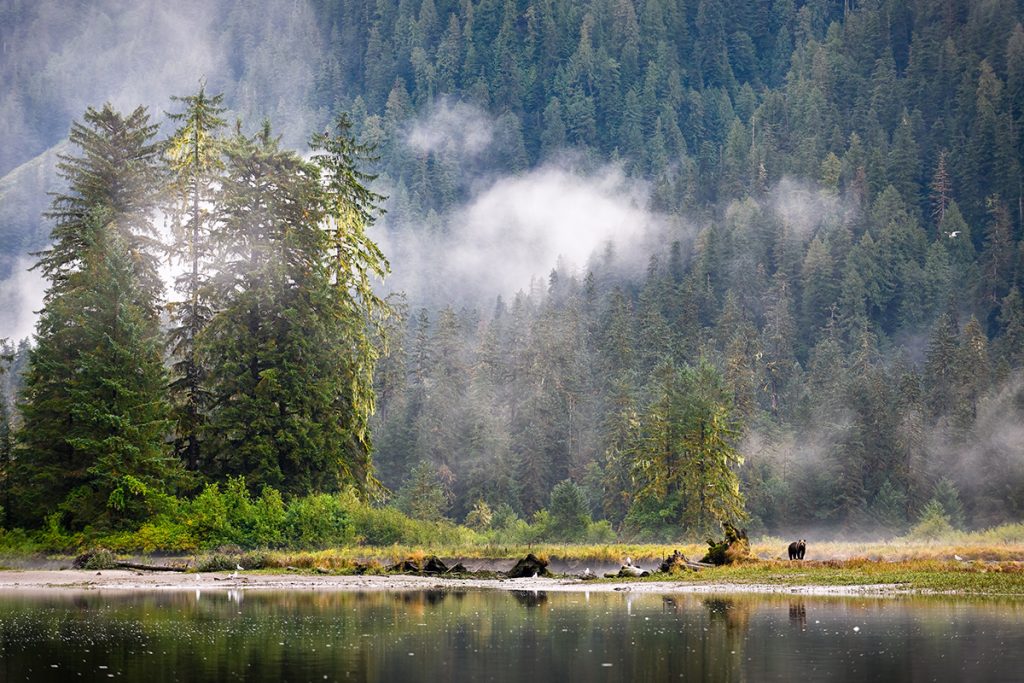
At stake was a large, mostly intact forest on Canada’s Pacific coast. Where the companies eyed timber, profits and jobs, the environmentalists saw a precious, threatened ecosystem in need of protection. The two sides started in stark opposition, but together would make a path to common ground — one that would recognize and involve the stewardship of Indigenous Peoples who had lived in the region for thousands of years.
There are stories of all night sessions, angry flare ups, negotiators storming out of meetings and quitting the process for a time. One source close to the action remembers the talks felt doomed every 15 minutes. But many times people pressed forward, came back together, built trust and worked out differences.
Coady was key to discussions as vice-president of environmental affairs and enterprise for big timber companies MacMillan Bloedel and Weyerhaeuser. Often the harshest criticism came not from opponents, she recalls, but from people who were on the same side. “The people who did the work got the most incoming fire.”
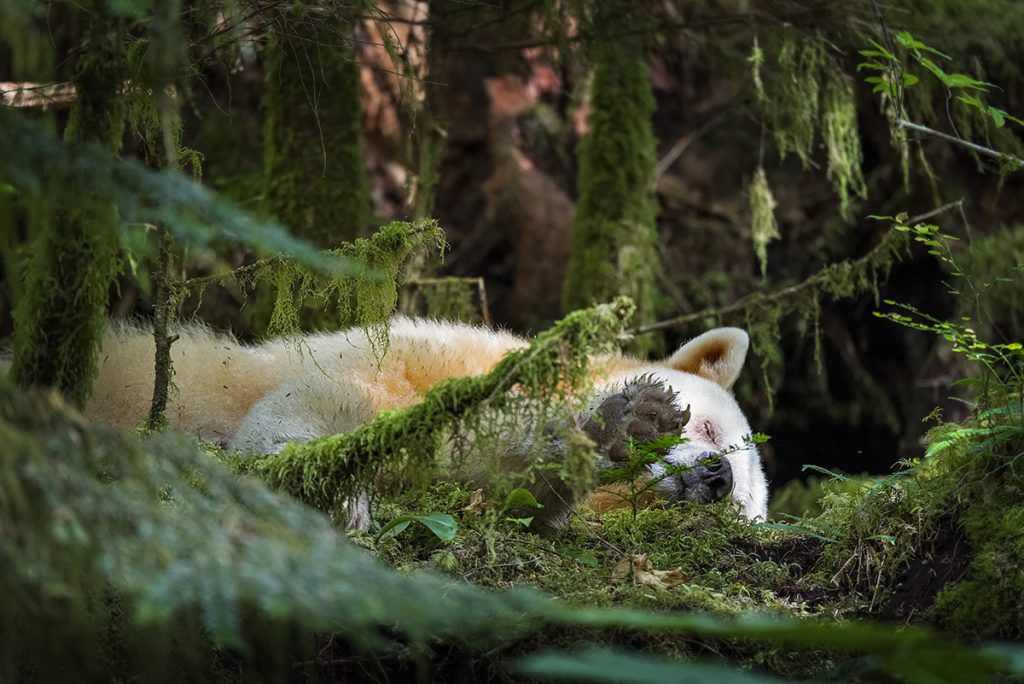
It took the better part of 19 years — and the participation of five major forest companies, environmental groups including Greenpeace and the Sierra Club of British Columbia, First Nations, unions, foundations, the provincial government and local governments — to arrive at a compromise and a plan everyone could endorse.
Completed in 2016, the agreement covers 6.4 million hectares (15.8 million acres) on British Columbia’s Pacific Ocean coast from near the northern tip of Vancouver Island to the border with Alaska. It’s a region with a maze of islands, long ocean inlets, rugged coastal mountains and giant trees.
Some 3.1 million hectares (7.6 million acres) are now completely off limits to logging, about 85 percent of the forest ecosystems in the area. Around 500,000 hectares (1.2 million acres) are available for forestry, but governed by ecosystem-based management rules requiring the companies to manage the land for objectives that include protecting waterways, endangered species and cultural values.
Crushed by negative news?
Sign up for the Reasons to be Cheerful newsletter.
Though not without its critics from the start — and ongoing arguments about whether logging companies are meeting their commitments — the agreement has attracted international attention and is widely seen as a major step forward that shows the possibilities of balancing divergent interests. There’s hope elements of it can be adopted to help resolve other complex conflicts.
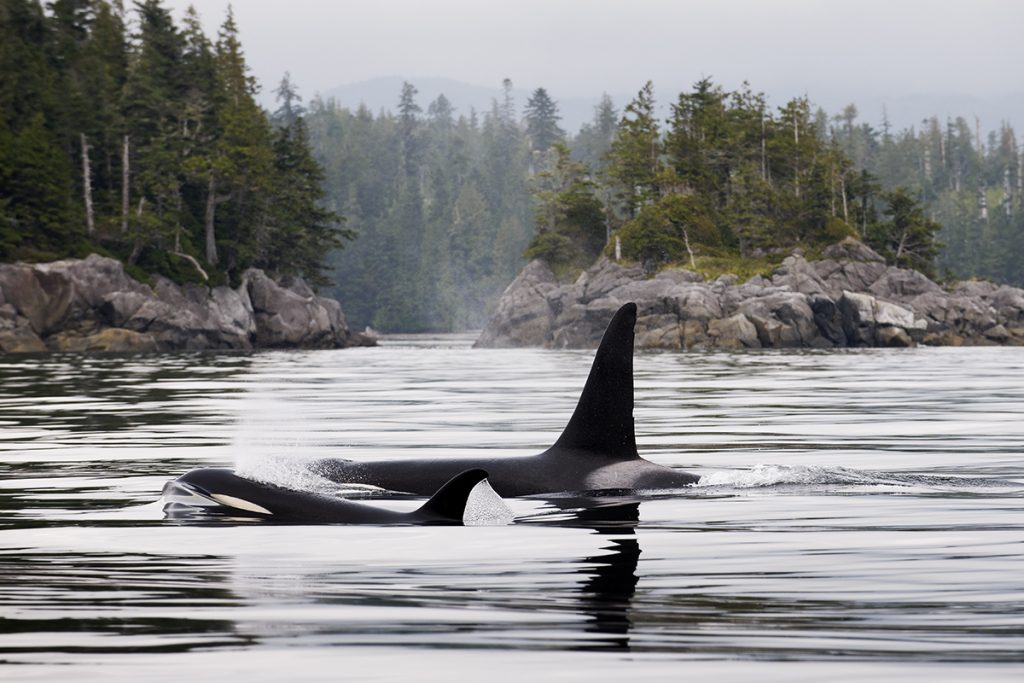
To the participants, getting there at many times felt impossible. It required long conversations and difficult decisions in lots of rooms over many years. Eventually it would need government approval and consultation with First Nations, but it started with the companies and the environmental groups realizing they had more to gain through negotiating than through fighting.
At the time, a so-called “war in the woods” had been raging in the province for decades, valley by valley and island by island. Direct action at places like Lyell Island, the Carmannah Valley, Meares Island, the Stein Valley and the Elaho Valley had delayed logging, forced negotiations and added to protected areas.
When the Great Bear negotiators started talking, fresh in everyone’s minds were the mass arrests in 1993 of some 900 people blocking a logging road to protect Clayoquot Sound near Tofino on Vancouver Island, still considered the largest act of civil disobedience in Canadian history. The action led to reduced logging in the region, agreement to log in an “ecologically sound” way, and the eventual sale of logging rights for half the area to a company owned by local First Nations.
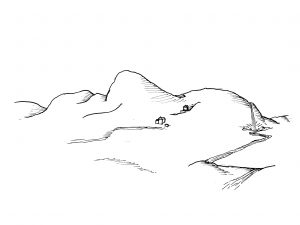
The days when logging companies could clear cut old growth forests in remote areas without drawing public attention and condemnation had ended, and Indigenous people and environmentalists had made it clear they could make business-as-usual difficult for industrial loggers, even if they couldn’t always stop them.
Moving on to the central and north coast, environmentalists came up with the Great Bear name, keying off the fact the area is home to a white subspecies of the black bear as well as grizzlies. They then waged a “markets campaign” targeting household names like Home Depot to discourage customers from buying wood from the area. It was enough to get the forest companies thinking about how to do things differently.
In Coady’s estimation the environmentalists were ready to talk too.
“We each realized we had the ability to stop the other from achieving their goals, but neither of us had the influence or power to actually get to a solution,” Coady says. “Meanwhile we were very well aware that coastal communities, the government, workers, First Nations, were getting very fed up with all this dispute and they did want to get to a solution.”
The sides reached a “standstill agreement” that saw the logging companies stop development in 100 intact watersheds in exchange for the environmental groups no longer asking the companies’ customers to cancel their orders. But a truce is not a solution.
Getting further meant building trust and overcoming the stereotypes each side held about the other. Outside of the formal negotiating sessions, the mediator would invite people from each side to join him for dinner, a venue where people could talk about their children, their lives, and simply connect on a human level.
A breakthrough came at a January 22, 2001 Elton John concert at what was then GM Place, now Rogers Arena, in Vancouver. The mediator had booked the owner’s box and invited the key negotiators from the environmental and industry sides.
One person who was there recalls it feeling like a middle school dance with both sides sticking to opposite sides of the room until about a third of the way through the concert. John had launched into “Saturday Night’s Alright (For Fighting)” when forest industry consultant Patrick Armstrong asked Jody Holmes, the lead scientist on the environmental side and director of the Rainforest Solutions Project, to dance.
Holmes has been quoted in the National Observer saying she agreed to the dance with a joke that it was on the condition Armstrong would negotiate keeping 100 valleys in the Great Bear pristine. “I said, ‘You know what Patrick? I’ll dance with you, but I need four watersheds to go off the table, you guys can’t log in them.’”
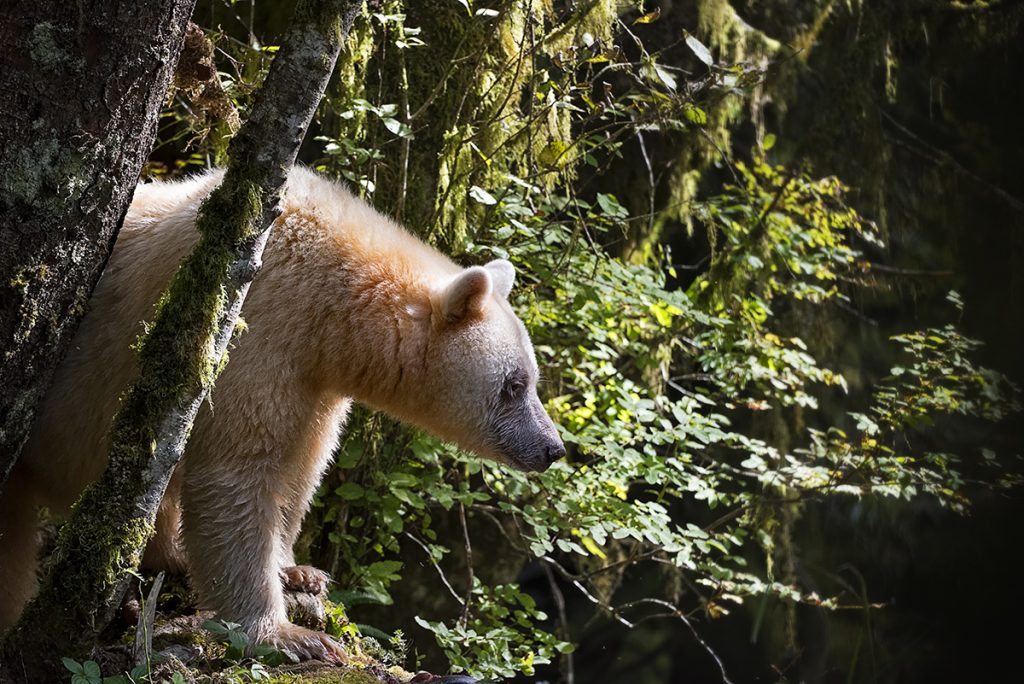
The response got a laugh, broke the ice and let everyone loosen up in how they related to each other. It turned out to be a key turning point towards building the relationships that would make reaching a compromise possible, work that would still take years to complete.
In the following months the parties agreed on a framework that deferred logging and committed that future land use decisions would be based on the best available independent science. There would be a move from conventional forestry to Ecosystem Based Management where the priority would be sustaining healthy ecosystems.
Other components included involving First Nations in decision-making and providing funding for economic diversification.
By one account from participants, working out the details that would make the framework real took another five years, a dozen committees and thousands of hours of meetings.
Environmental activists had proven nimble at a critical moment, recalls Valerie Langer, a key Great Bear Rainforest campaigner. Having created pressure that got people to the table, they had to “pivot to a different approach when the context changed. We understood we alone would not and could not solve the thorny problems of land title conflicts and forest degradation.” That meant shifting “from a very noisy public campaign to a very delicate set of negotiations that were concurrently driven by First Nations title rights and by science-based conservation targets.”
Because the companies and the environmentalists aren’t the legal decision makers for what happens on Crown land, it wasn’t until 2016 when the provincial government signed land use agreements with more than 20 First Nations on the northern and central coast that the work could be considered done.
For the First Nations involved, the experience was transformative, says Dallas Smith, the president of the Nanwakolas Council that includes five First Nations.
“Because there hasn’t been really any treaties in the area, the Great Bear’s huge,” Smith said. “The Great Bear has given the governments of First Nations and the governments of British Columbia and of Canada a sort of common bowl that we can talk in. We know when we get together we can have these discussions.”
Somewhere between 26,000 and 30,000 people are part of the 27 First Nations covered by the agreements, he said. For many years people in those communities felt stuck between the environmentalists and the companies, a feeling that remained throughout the early years of discussions.
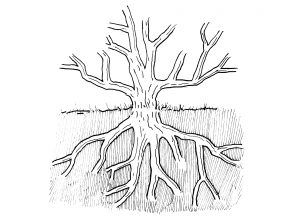
Communities like Smith’s at Rivers Inlet had been “buttonholed” to reserves that were maybe three percent of their traditional territory. Through the treaty process they might hope to have title recognized to 11 percent of it, Smith says.
But the Great Bear process instead provided a means to have a say on the complete area. “It just brought more to our rights and title,” he said. “We could see [our land]. We live on it. We depend on it. We work with it. That’s real now because of the Great Bear.”
The discussions were happening at the same time that Indigenous nations in other parts of the province were advancing their rights through the courts, and the nations involved in the Great Bear went from being seen as one of several stakeholders to ones that needed to be met on a government-to-government basis.
The process could be a model for what reconciliation with Indigenous people can look like, Smith said, including the sharing of forest revenue and management. There’s still a ways to go towards joint decision making, he added, but the movement in that direction can be traced at least in part to the Great Bear process.
A key to getting First Nations to agree to the plan was the establishment of the Coast Funds endowment, Smith says. The fund was created in 2006 with a $60 million endowment to encourage stewardship and a further $60 million to help fund the creation of First Nation-owned businesses. The money came from the provincial and federal government and six foundations.
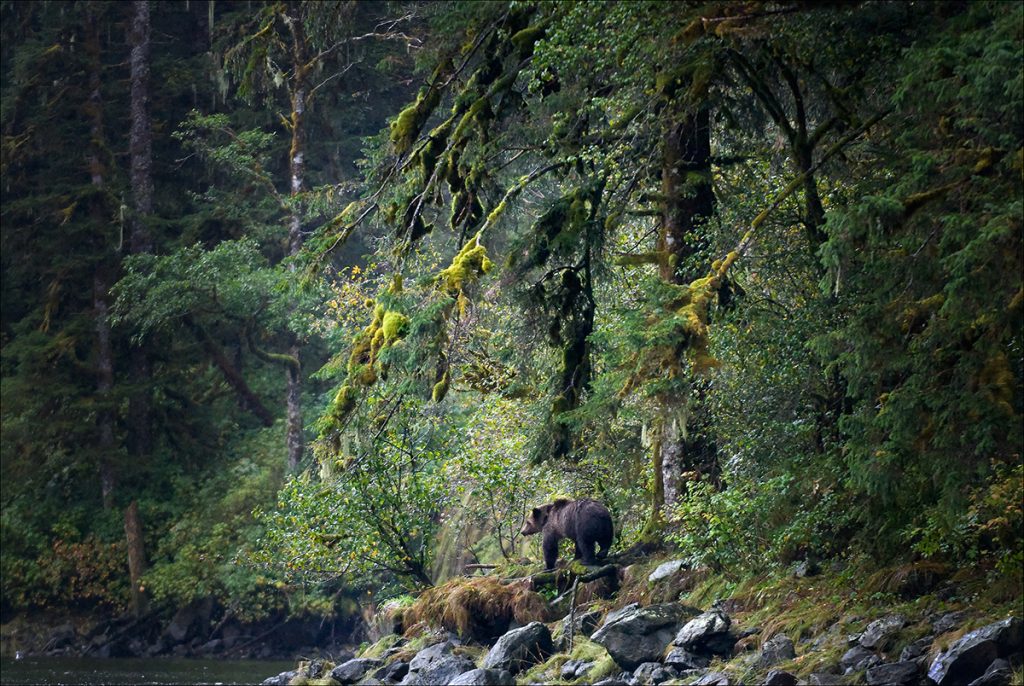
With the fishing industry in decline, historically the biggest source of work in the region, communities were reluctant to sign agreements that would limit their opportunities for jobs in logging. The fund allowed people to instead set up eco-tourism businesses, guiding trips and providing other services they wouldn’t previously have imagined themselves doing, Smith says.
Through the years of negotiations the First Nations rebuilt confidence and pride, Smith says. “Now we know what we want, we know what we’re trying to achieve and if we have to go through another Great Bear type scenario we’re going to be a lot more efficient at getting what we need at the end of the day.”
The certainty the agreements provide about what happens on the land is welcome, and people are generally optimistic about how things are going, says Smith. “It’s a living thing. It still has some sore points. It still has some healing, and it has some areas that are very strong still.”
Valerie Langer warns vigilance is crucial. She waits expectantly for a five-year review of the agreements slated for 2021. “The devil is in the details,” she says. “Any system can be gamed.” Governments must “make the data transparent” and do what it takes to “ensure the conservation model developed in the Great Bear Rainforest is living up to the honors it received when announced back in 2016.”
Linda Coady, who left the industry a few years ago and now works for an environmental organization, says the Great Bear deal was no quick fix, but it was significant. “It was a big achievement.”
Dallas Smith offers his measure of what’s been accomplished. “I think there was a disconnect between First Nations and their cultural connections to their land and resources. The Great Bear’s re-established that for us.”

